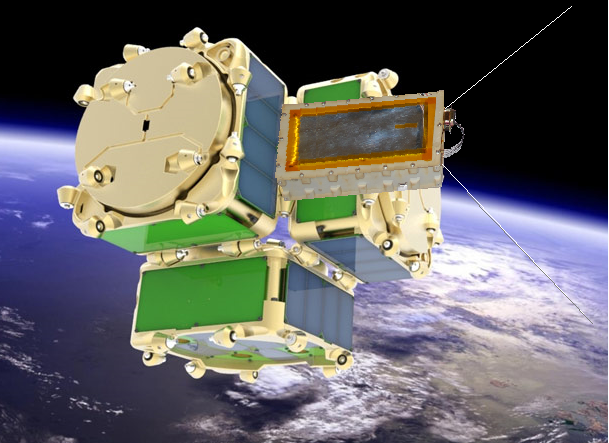Comments under the question What ever happened to SHERPA? about NovaWurks, Inc. led me to search for the DARPA eXCITe microsatellite. Spaceflight 101's page includes:
Th(e) objectives of the mission are:
- Demonstrate aggregation ability to withstand launch environment, perform and maintain thermal control, communicate with the ground, reconstitute traditional spacecraft bus capability
- Demonstrate aggregation ability to support a simple and a complex payload An additional payload, eXCITe carries the QIKcom-2 amateur communications payload for the US Naval Academy Satellite Lab, containing an APRS packet radio communications transponders for relaying remote telemetry, sensor and user data from remote users and amateur radio environmental experiments or other data sources back to Amateur Radio experimenters via a global network of internet linked volunteer ground stations.
eXCITe will also carry the SeeMe satellite to be deployed some time after launch.>
Both this page and SeeMe's linked page list 2018 Va SLC-4E Falcon-9 v1.2 (Block 5) as the launch information, and includes a long list of other private and also government satellites to be launched at the same time, which ends appropriately with (US Gov), (US Gov), (US Gov), (US Gov), (US Gov).
To the extent that I wouldn't have to be killed after being told (humoralso XKCD 707) I'd like to know the current status of this smallsat with a piggy-backed smaller-sat. Has it launched yet? If not, is this launch scheduled?
I'm guessing it hasn't since ICEYE X1 appears in Celestrak's current satcat but ICEYE X2 does not.
above: "eXCITe (with SeeMe on top) [DARPA]" Source
above: Source
The QIKcom-2 module is a senior engineering project of a group of students at the Naval Academy that has been offered a ride to space on a host satellite named eXCITe originally to be launched in late 2016
[...]QIKCOM-2 continues the PCsat(2001) and PSAT(2015) amateur radio missions noted above containing an APRS packet radio communications transponder for relaying remote telemetry, sensor and user data from remote users and amateur radio environmental experiments or other data sources back to Amateur Radio experimenters via a global network of internet linked volunteer ground stations. The APRS transponder also includes telemetry, about the module's temperatures, power supply voltages and currents, solar array attitude and GPS position. QIKCOM-2 also adds a unique experimental DTMF (TouchTone) uplink on 145.98 MHz for users in the field who might not have access to an all-in-one integrated APRS radio.

